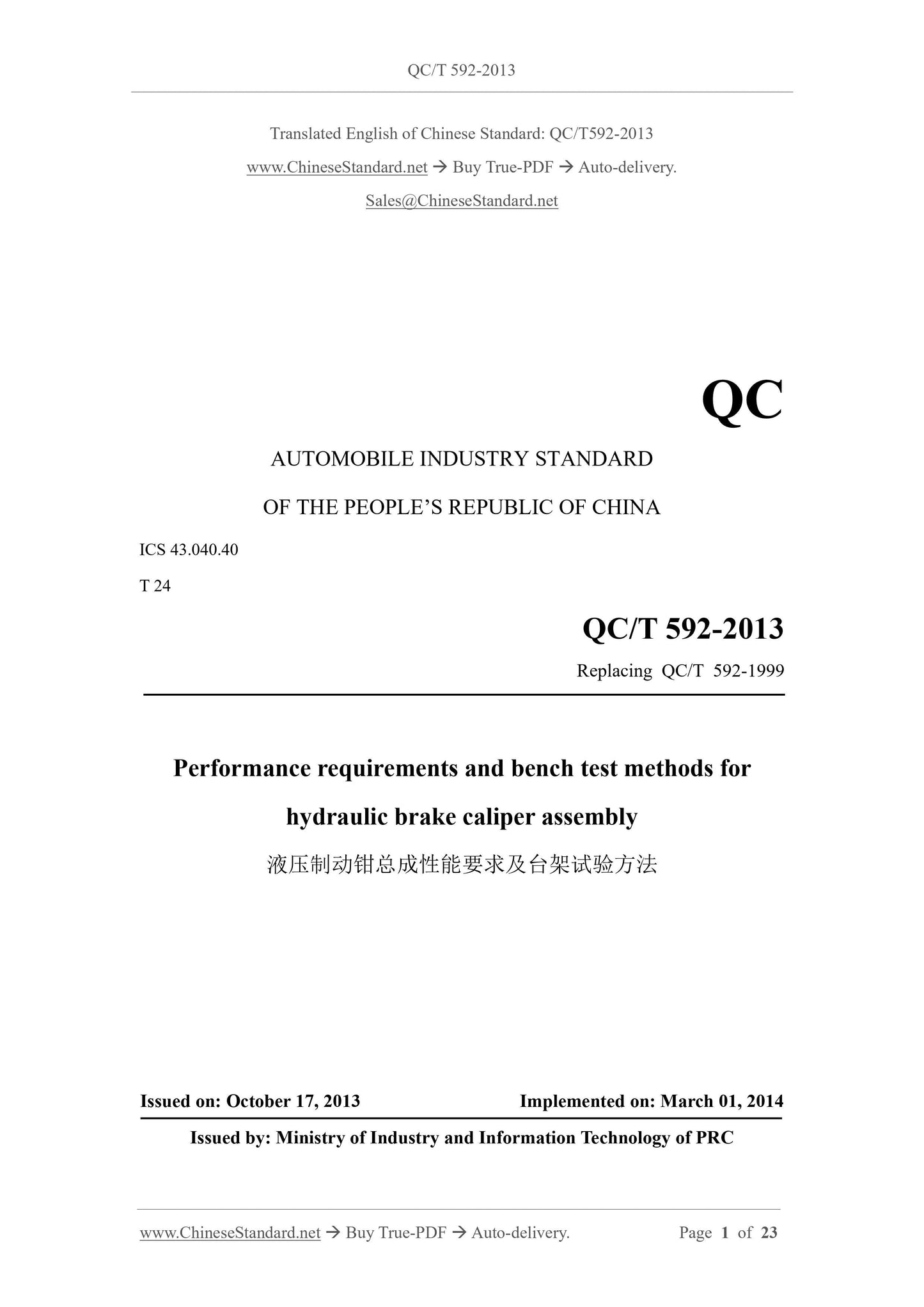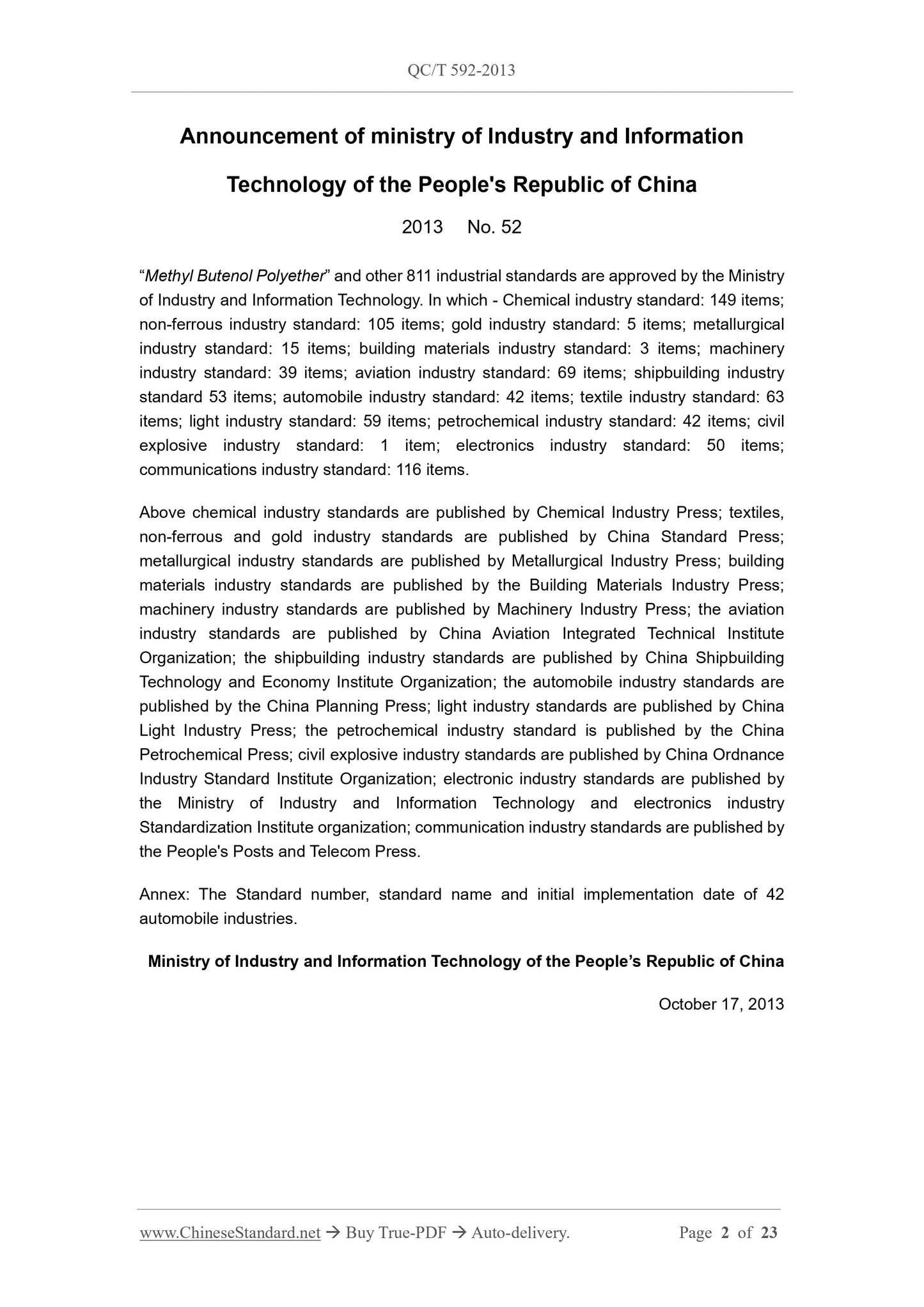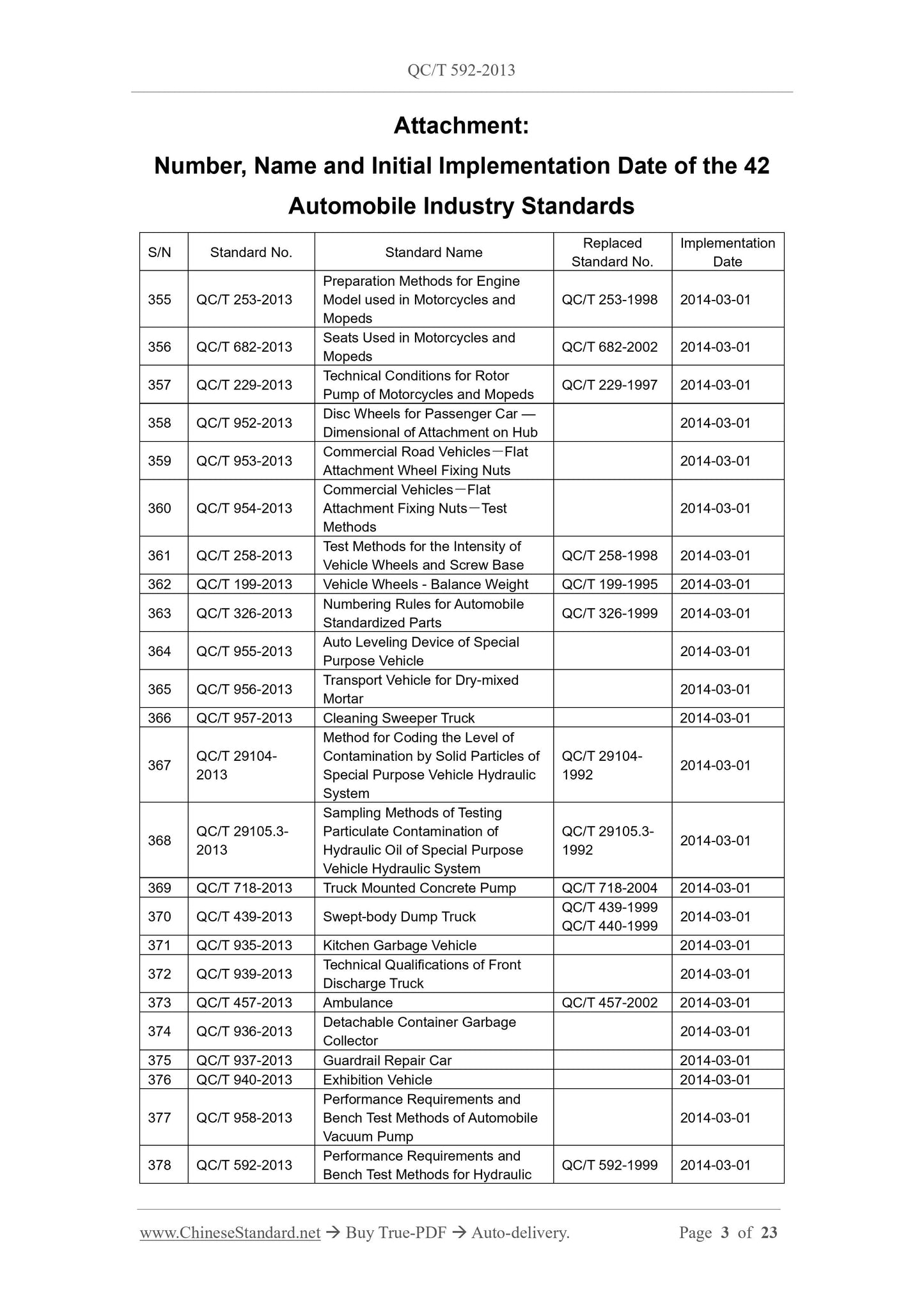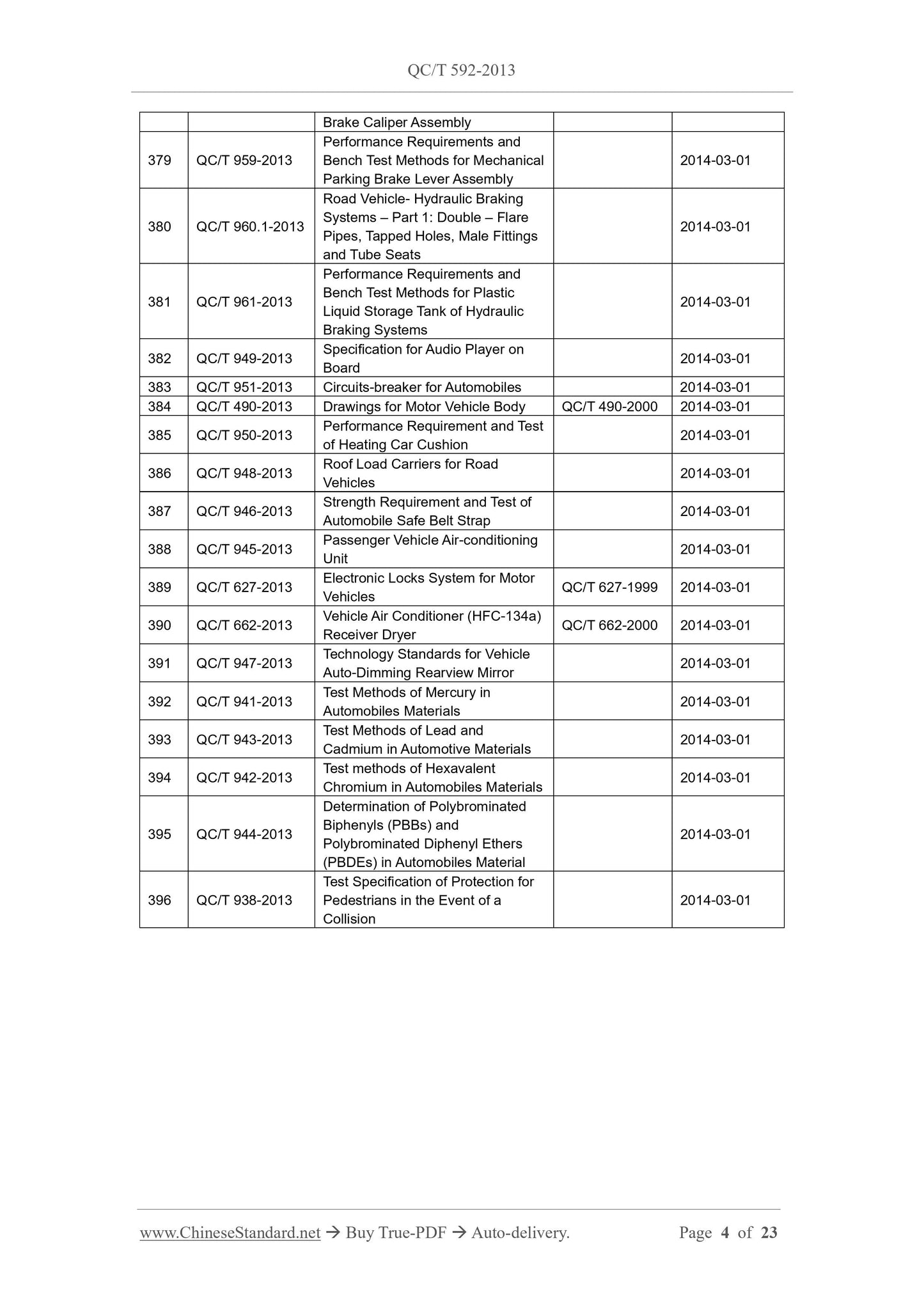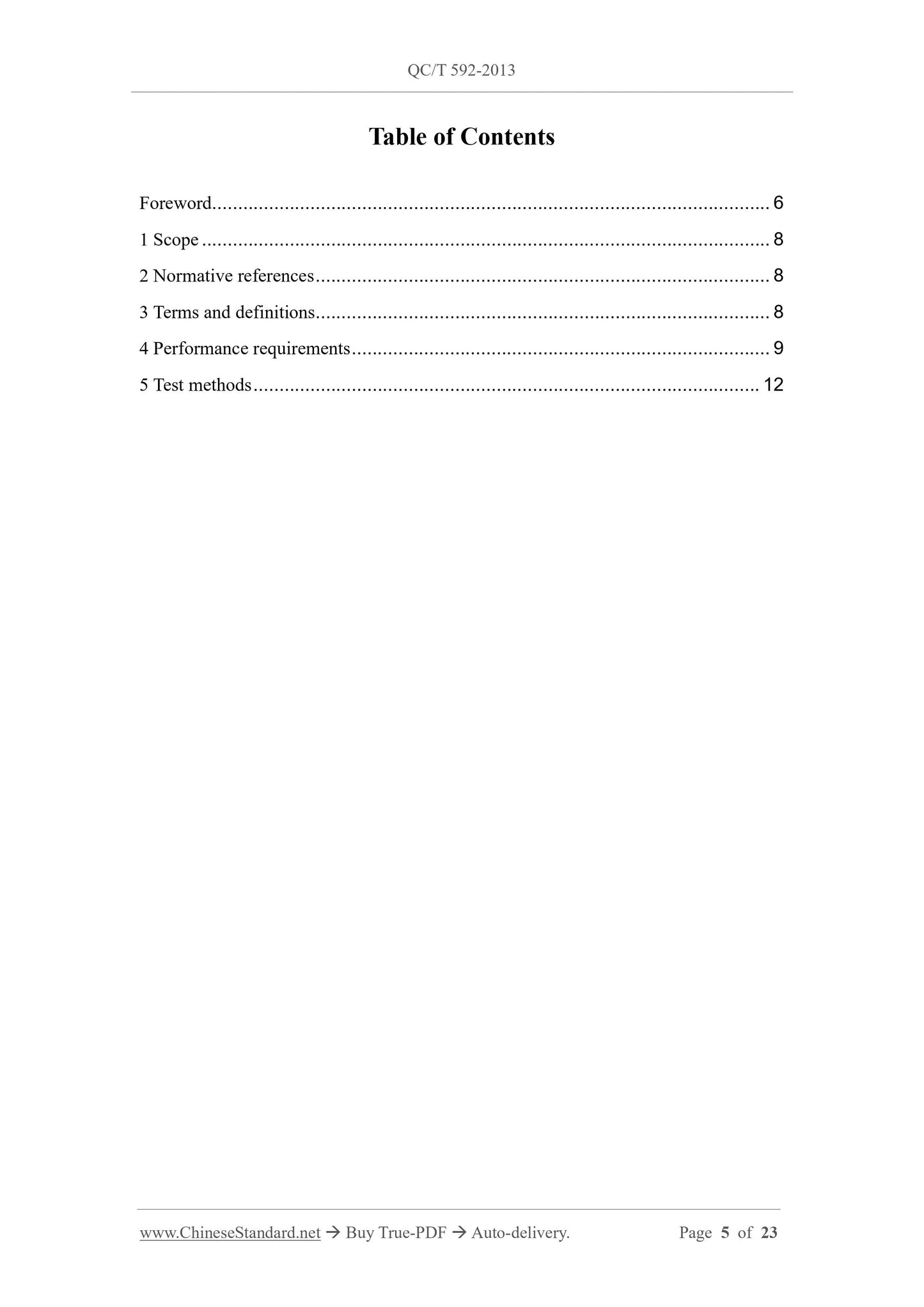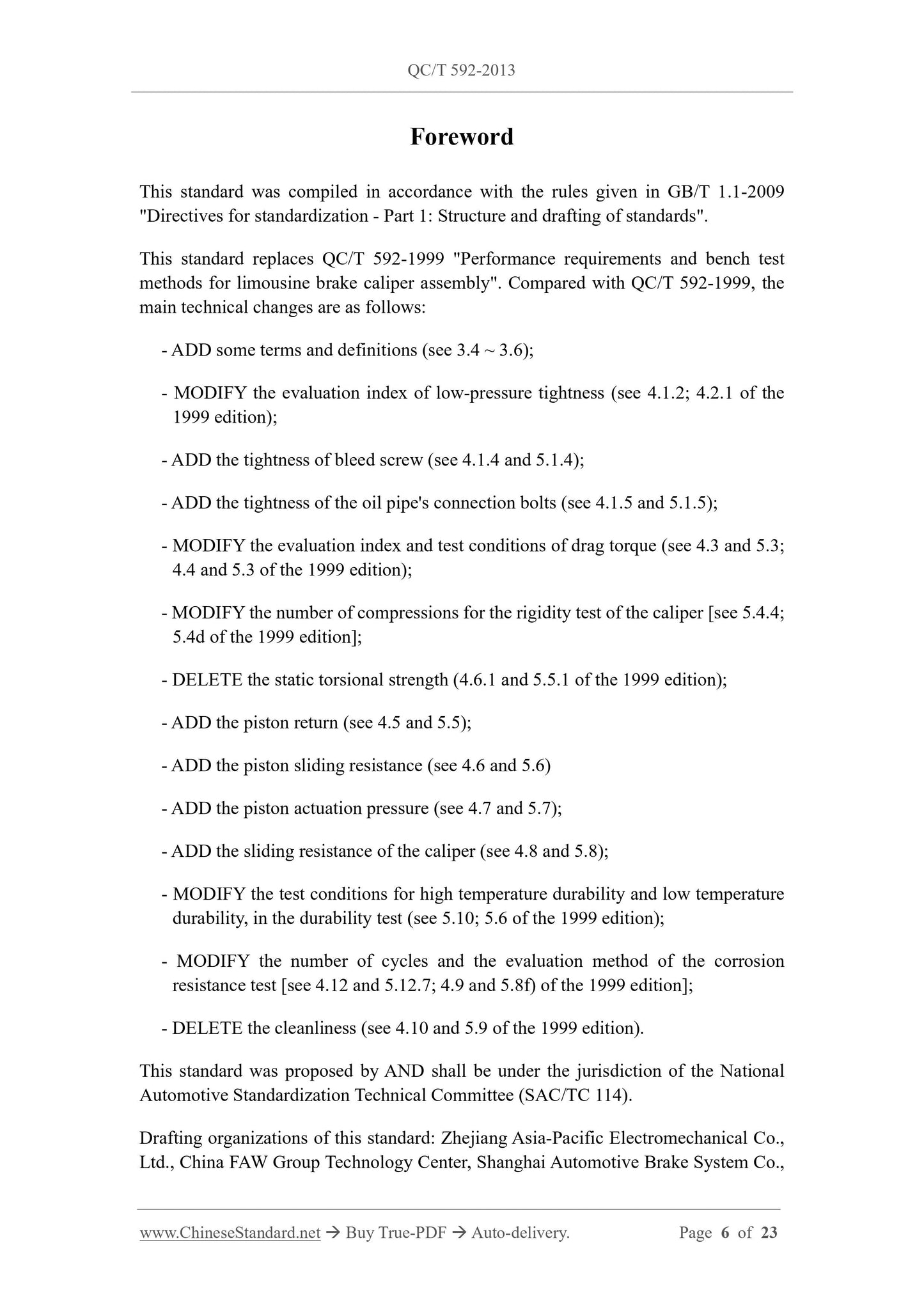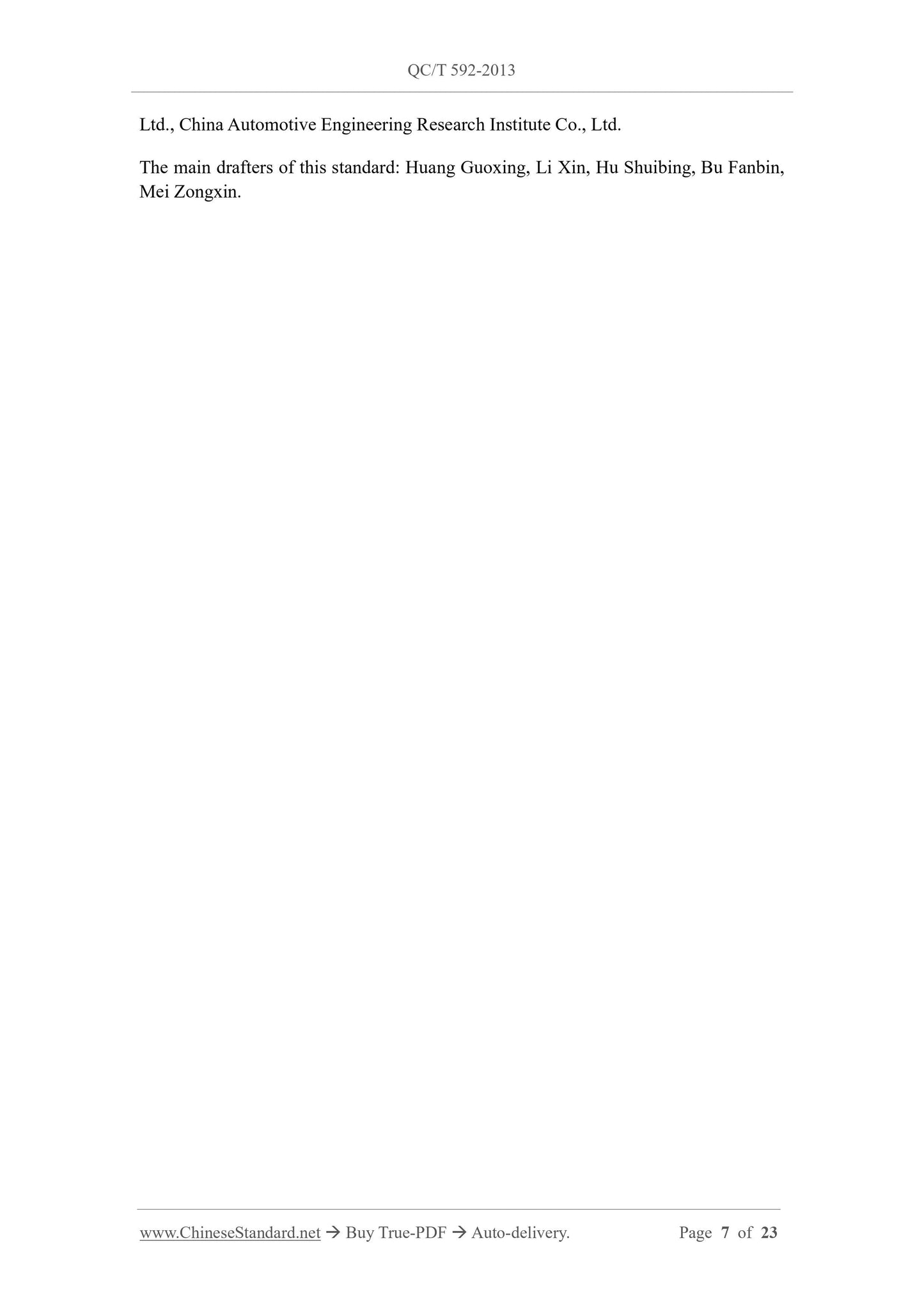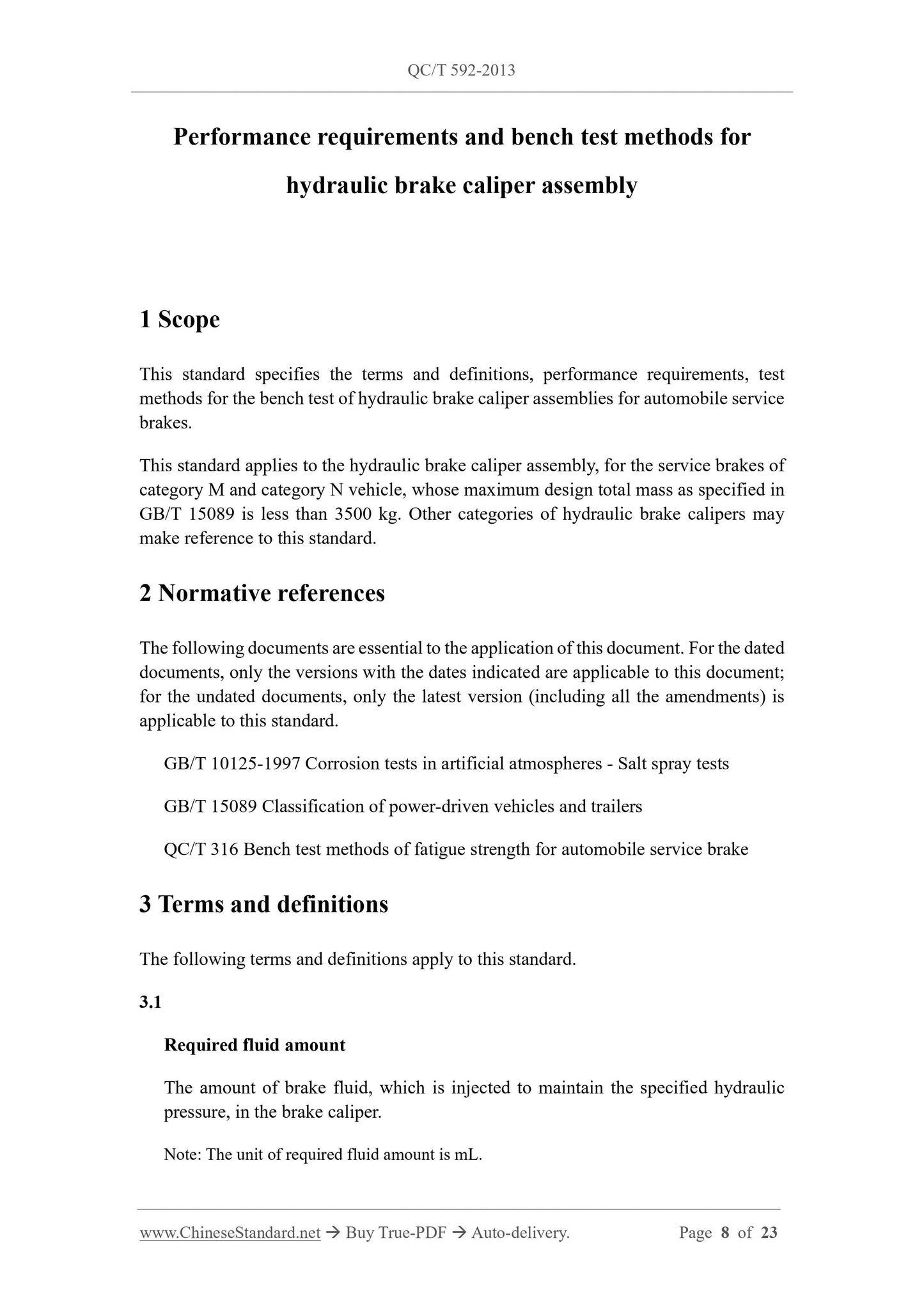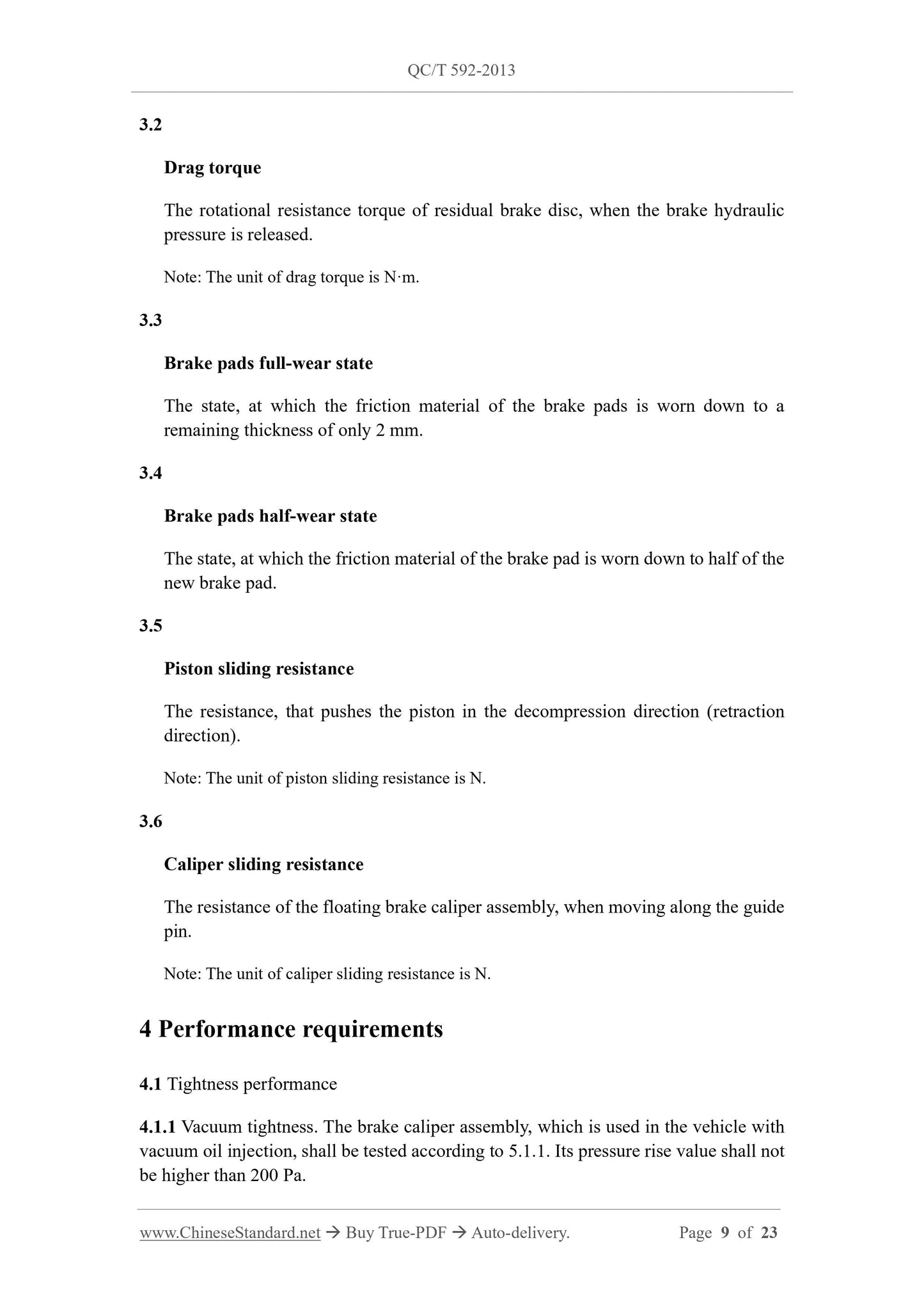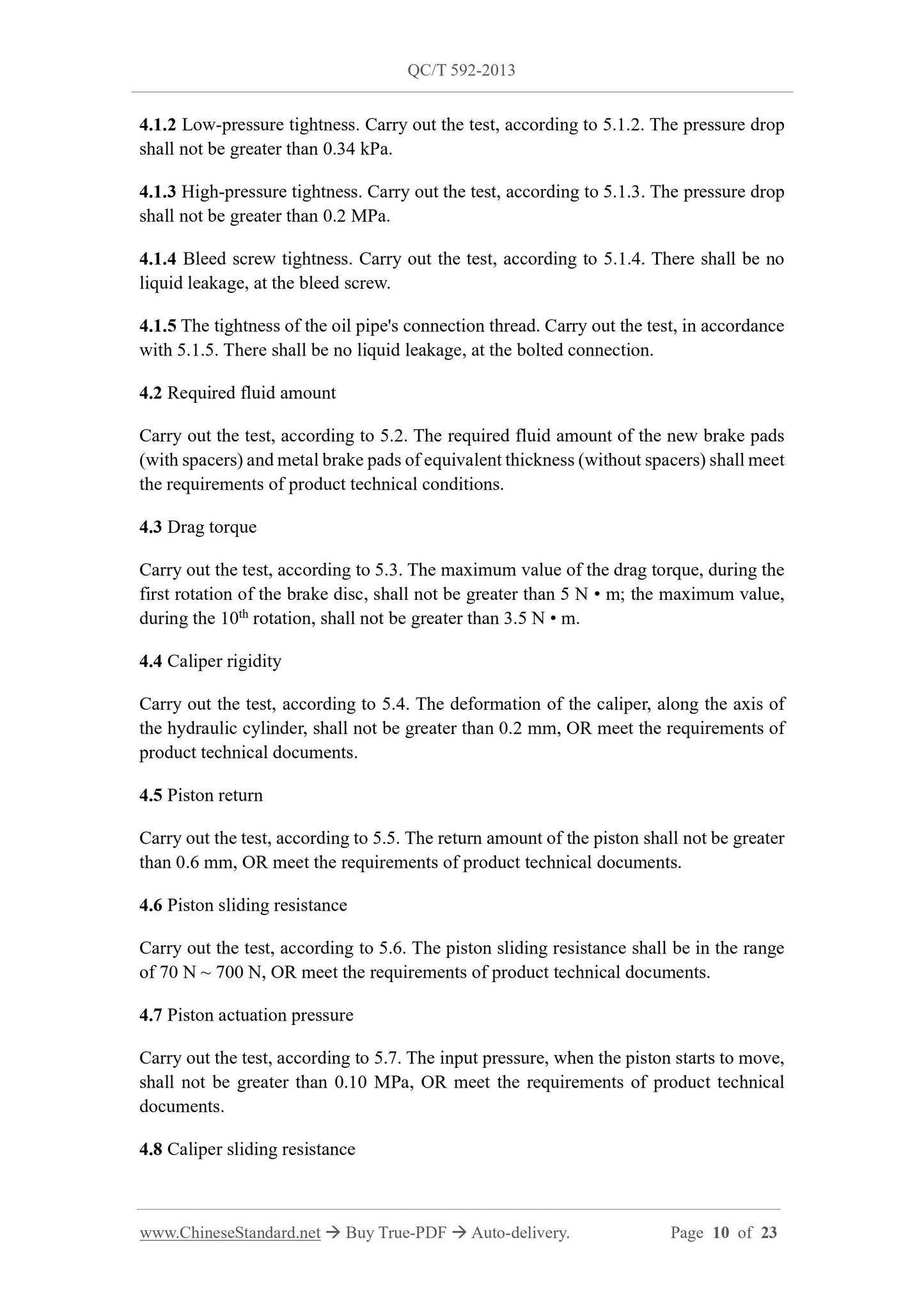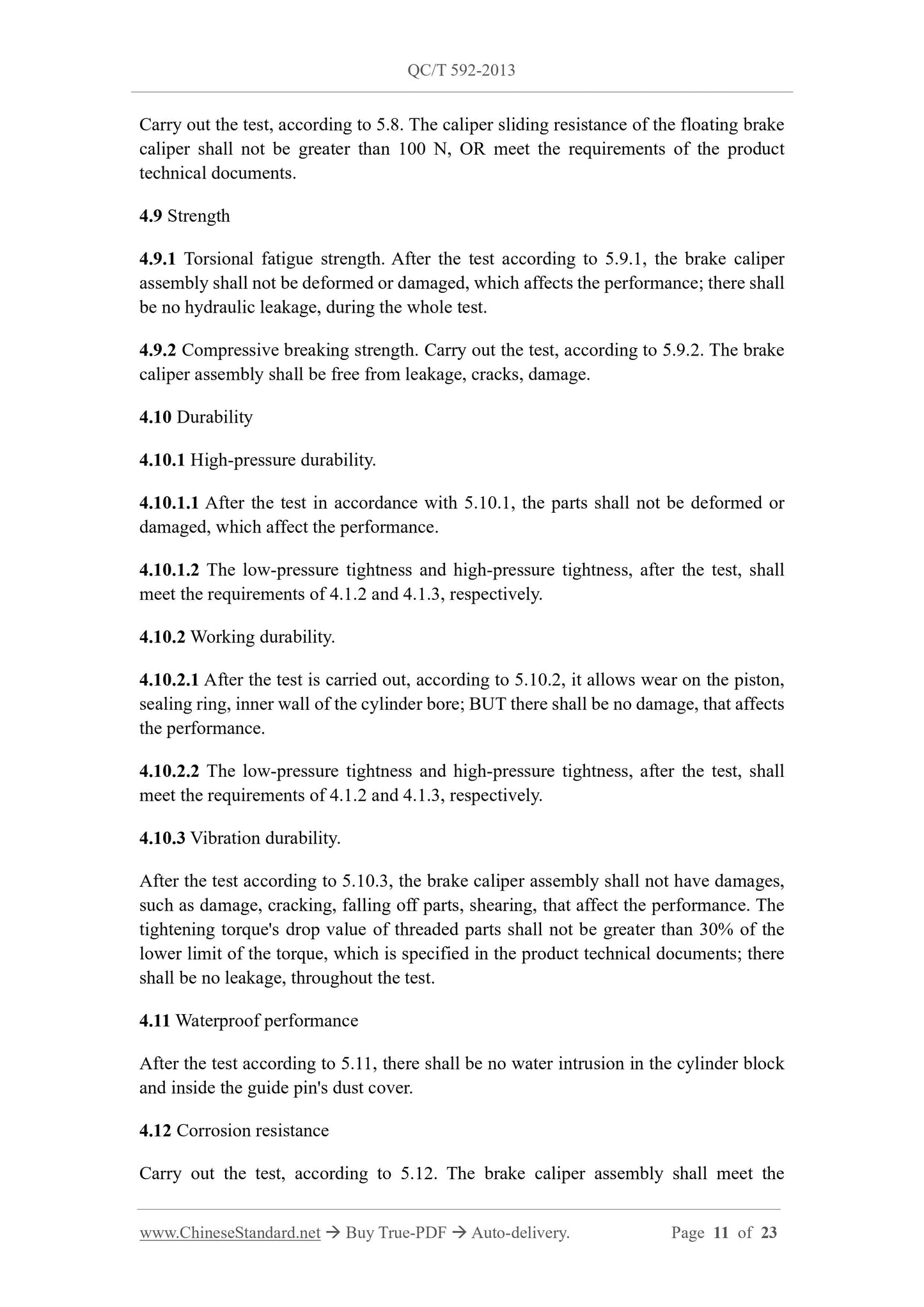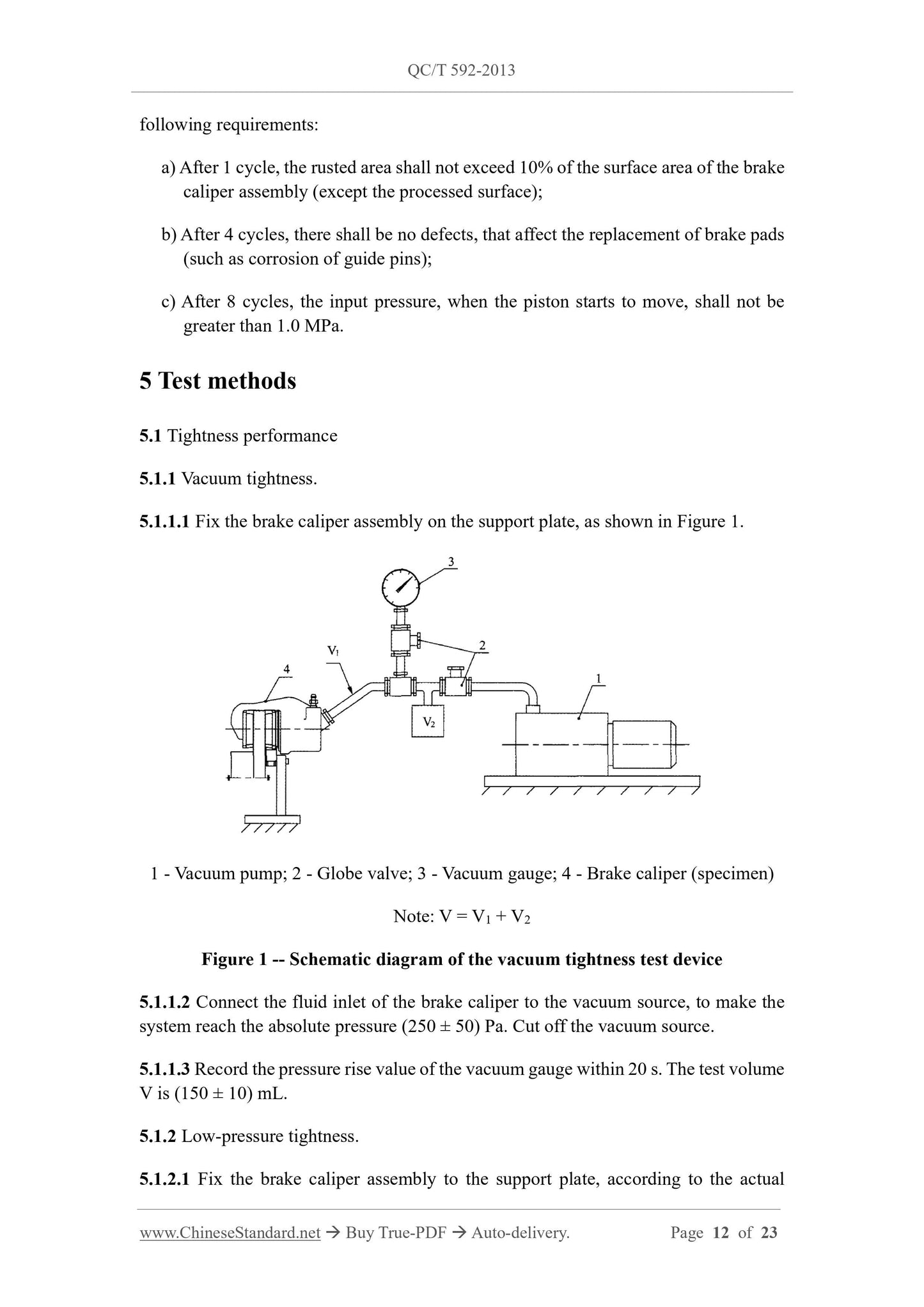1
/
of
12
www.ChineseStandard.us -- Field Test Asia Pte. Ltd.
QC/T 592-2013 English PDF (QC/T592-2013)
QC/T 592-2013 English PDF (QC/T592-2013)
Regular price
$155.00
Regular price
Sale price
$155.00
Unit price
/
per
Shipping calculated at checkout.
Couldn't load pickup availability
QC/T 592-2013: Performance requirements and Bench test methods for Hydraulic brake caliper assembly
Delivery: 9 seconds. Download (and Email) true-PDF + Invoice.Get Quotation: Click QC/T 592-2013 (Self-service in 1-minute)
Newer / historical versions: QC/T 592-2013
Preview True-PDF
Scope
This standard specifies the terms and definitions, performance requirements, testmethods for the bench test of hydraulic brake caliper assemblies for automobile service
brakes.
This standard applies to the hydraulic brake caliper assembly, for the service brakes of
category M and category N vehicle, whose maximum design total mass as specified in
GB/T 15089 is less than 3500 kg. Other categories of hydraulic brake calipers may
make reference to this standard.
Basic Data
| Standard ID | QC/T 592-2013 (QC/T592-2013) |
| Description (Translated English) | Performance requirements and Bench test methods for Hydraulic brake caliper assembly |
| Sector / Industry | Automobile and Vehicle Industry Standard (Recommended) |
| Classification of Chinese Standard | T24 |
| Classification of International Standard | 43.040.40 |
| Word Count Estimation | 18,140 |
| Older Standard (superseded by this standard) | QC/T 592-1999 |
| Quoted Standard | GB/T 10125-1997; GB/T 15089; QC/T 316 |
| Regulation (derived from) | Ministry of Industry and Information Technology Notice No. 52 of 2013; industry standard for filing Notice 2013 No. 12 (No. 168 overall) |
| Issuing agency(ies) | Ministry of Industry and Information Technology |
| Summary | This standard specifies the automotive service brakes with hydraulic brake caliper assembly bench of terms and definitions, performance requirements and test methods. This standard applies to GB/T 15089 stipulated maximum design total mass of less than 35 |
Share
